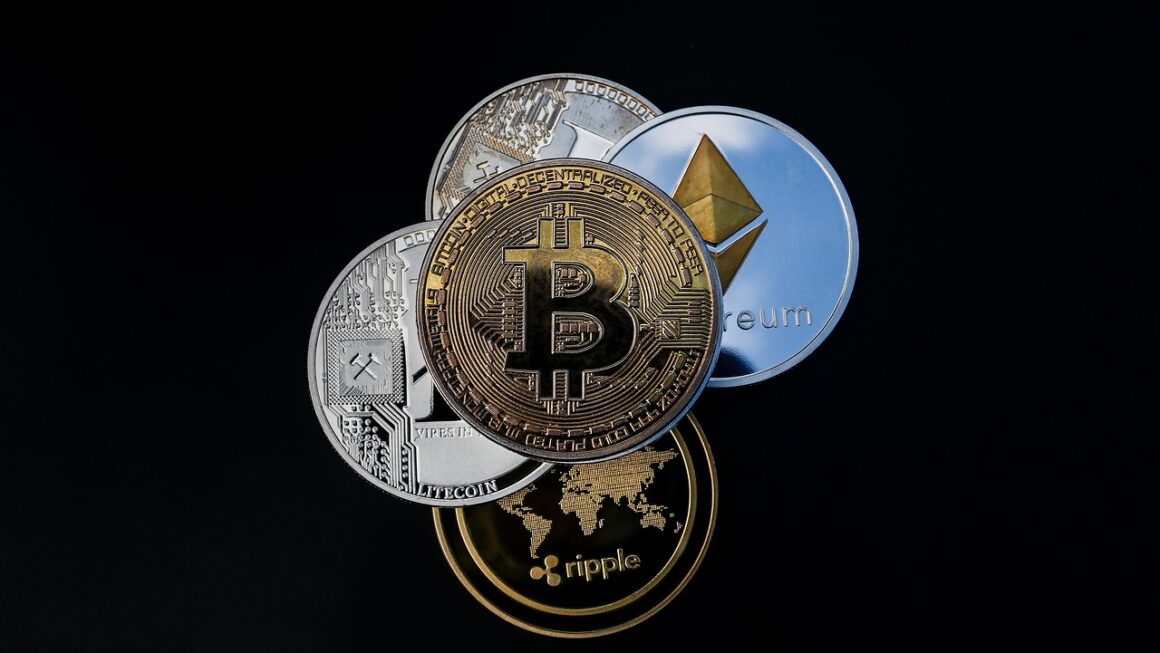Stablecoins have emerged as a crucial bridge between the traditional financial world and the burgeoning world of cryptocurrencies. They offer the advantages of cryptocurrency – speed, transparency, and accessibility – while mitigating the notorious volatility associated with assets like Bitcoin and Ethereum. This makes them an attractive option for traders, businesses, and everyday users seeking a reliable digital currency. Let’s dive into the world of stablecoins and understand what makes them so unique.
What are Stablecoins?
Definition and Purpose
Stablecoins are cryptocurrencies designed to maintain a stable value relative to a reference asset, typically a fiat currency like the US dollar. Unlike volatile cryptocurrencies, stablecoins aim to provide price stability, making them suitable for everyday transactions, remittances, and as a safe haven during market downturns. The core purpose is to offer the benefits of digital currencies (like fast transactions and lower fees in some cases) without the unpredictable price swings.
How They Work: Pegging Mechanisms
The “stability” of a stablecoin is achieved through various mechanisms that maintain its peg to the reference asset. These mechanisms can be broadly categorized into:
- Fiat-Collateralized: These stablecoins are backed by reserves of fiat currency (e.g., USD) held in custody. For every stablecoin issued, an equivalent amount of fiat currency is supposed to be held in reserve.
Example: USDT (Tether) and USDC (USD Coin) are the most prominent examples. They claim to hold USD reserves equal to the circulating supply of their respective tokens. The actual details and audits of these reserves are a subject of ongoing discussion.
- Crypto-Collateralized: These stablecoins are backed by other cryptocurrencies. Because cryptocurrencies are volatile, these stablecoins are typically over-collateralized to buffer against price fluctuations.
Example: DAI (MakerDAO) is a popular crypto-collateralized stablecoin backed by a basket of cryptocurrencies, primarily Ethereum. The system employs smart contracts to manage collateralization ratios and maintain the peg.
- Algorithmic Stablecoins: These stablecoins rely on algorithms and smart contracts to manage supply and demand, aiming to maintain price stability without direct collateralization. They can use strategies like seigniorage shares or rebasing.
Example: (Historically) TerraUSD (UST) aimed to maintain its peg through an algorithmic relationship with LUNA. The collapse of UST demonstrated the significant risks associated with this type of stablecoin, especially in adverse market conditions. Note: newer algorithmic stablecoins may use different mechanisms and designs aimed at avoiding the pitfalls of UST.
- Commodity-Collateralized: These stablecoins are backed by real-world assets like gold, silver, or other commodities.
Example: Pax Gold (PAXG) is backed by physical gold reserves stored in vaults. Each PAXG token represents one fine troy ounce of gold.
Benefits of Using Stablecoins
- Reduced Volatility: The primary benefit is price stability compared to other cryptocurrencies, making them suitable for payments and savings.
- Faster Transactions: Cryptocurrency transactions are generally faster than traditional banking transfers, and stablecoins are no exception.
- Lower Fees (Potentially): Transaction fees on some blockchain networks can be lower than traditional payment processing fees, especially for international transfers.
- Accessibility: Stablecoins can be accessed by anyone with an internet connection and a cryptocurrency wallet, offering financial inclusion for the unbanked.
- Programmability: Stablecoins can be integrated into smart contracts and decentralized applications (dApps), enabling new financial applications.
Popular Stablecoins in the Market
Top Stablecoins by Market Capitalization
The stablecoin landscape is dominated by a few key players. As of late 2023/early 2024, the top stablecoins by market capitalization typically include:
- USDT (Tether): Consistently the largest stablecoin, USDT’s dominance is often debated due to concerns about its reserve transparency.
- USDC (USD Coin): A close second, USDC is known for its greater transparency and regulatory compliance.
- DAI (MakerDAO): A decentralized, crypto-collateralized stablecoin with a strong community and robust governance.
- BUSD (Binance USD): Co-issued by Binance and Paxos, BUSD offered regulated stability but is being phased out. Users are encouraged to redeem their BUSD holdings.
- Others: Smaller stablecoins like TrueUSD (TUSD) and Gemini Dollar (GUSD) also exist, catering to specific niches.
Differences and Use Cases
Each stablecoin has unique features and use cases:
- USDT: Widely used for trading on cryptocurrency exchanges due to its high liquidity and availability.
- USDC: Preferred for its regulatory compliance and often used in DeFi (Decentralized Finance) protocols.
- DAI: Popular for its decentralized nature and used extensively in lending and borrowing platforms.
Risks Associated with Each Type
It’s crucial to understand the risks involved with each type of stablecoin:
- Fiat-Collateralized: Counterparty risk (the issuer failing to maintain reserves or becoming insolvent), regulatory risk (government intervention or new regulations), and centralization risk (reliance on a central entity). The de-pegging events of USDT in the past have highlighted this.
- Crypto-Collateralized: Volatility of the underlying collateral, smart contract risks (bugs or vulnerabilities in the code), and liquidation risks (collateral being liquidated if its value drops below a certain threshold).
- Algorithmic Stablecoins: Design flaws in the algorithm, susceptibility to “death spiral” scenarios (where declining confidence leads to a rapid loss of value), and dependence on market sentiment. The collapse of UST highlighted the critical importance of robust design in this type of stablecoin.
- Commodity-Collateralized: Storage costs, auditing complexities, and dependence on the reliability of the commodity custodian.
The Role of Stablecoins in the Cryptocurrency Ecosystem
DeFi Applications
Stablecoins are the backbone of many DeFi applications:
- Lending and Borrowing: Stablecoins are used as collateral and borrowed assets in decentralized lending platforms like Aave and Compound.
- Yield Farming: Stablecoins are deposited into liquidity pools to earn rewards in the form of trading fees and governance tokens.
- Decentralized Exchanges (DEXs): Stablecoins are paired with other cryptocurrencies to provide liquidity on DEXs like Uniswap and Sushiswap.
Payment Systems and Remittances
Stablecoins offer potential advantages for payments and remittances:
- Cross-Border Payments: Stablecoins can facilitate faster and cheaper international transfers compared to traditional wire transfers.
- Merchant Adoption: Businesses can accept stablecoins as payment for goods and services, reducing transaction fees and settlement times.
- Remittances: Migrant workers can use stablecoins to send money home to their families at a lower cost than traditional remittance services.
Trading and Investment
Stablecoins play a vital role in cryptocurrency trading:
- Trading Pairs: Stablecoins are commonly paired with other cryptocurrencies on exchanges, providing a stable base currency for trading.
- Profit Taking: Traders can convert volatile cryptocurrencies into stablecoins to lock in profits during market upswings.
- Market Downturns: Investors can park their funds in stablecoins during market corrections to preserve capital.
The Future of Stablecoins
Regulatory Landscape
The regulatory landscape for stablecoins is rapidly evolving. Regulators around the world are grappling with how to classify and regulate stablecoins to protect consumers and maintain financial stability. Key areas of focus include:
- Reserve Requirements: Regulations may require stablecoin issuers to hold reserves that are equivalent to the circulating supply of their tokens.
- Auditing and Transparency: Regulations may mandate regular audits of stablecoin reserves and require issuers to provide greater transparency about their operations.
- Licensing and Oversight: Regulations may require stablecoin issuers to obtain licenses and be subject to ongoing supervision by regulatory authorities.
Innovations and Developments
The stablecoin space is constantly evolving, with new innovations and developments emerging:
- Central Bank Digital Currencies (CBDCs): Central banks around the world are exploring the possibility of issuing their own digital currencies, which could compete with stablecoins. However, they also may be complementary.
- Stablecoin 2.0: New types of stablecoins are being developed that aim to address the shortcomings of existing stablecoins, such as improved stability mechanisms and greater decentralization.
- Integration with Traditional Finance: Stablecoins are increasingly being integrated into traditional financial systems, such as banking and payments infrastructure.
Challenges and Opportunities
The future of stablecoins faces both challenges and opportunities:
- Challenges: Regulatory uncertainty, competition from CBDCs, and the risk of de-pegging events.
- Opportunities: Increased adoption in DeFi, payments, and remittances, and the potential to bridge the gap between traditional finance and the digital asset world.
Conclusion
Stablecoins represent a significant innovation in the cryptocurrency landscape, offering a bridge between traditional finance and the digital asset world. While risks exist, the benefits of price stability, faster transactions, and increased accessibility make them a valuable tool for traders, businesses, and individuals alike. As the regulatory landscape evolves and new innovations emerge, stablecoins are poised to play an increasingly important role in the future of finance. Understanding the different types, their risks, and their applications is crucial for anyone looking to navigate the evolving world of digital currencies. Stay informed and choose stablecoins that align with your risk tolerance and financial goals.




